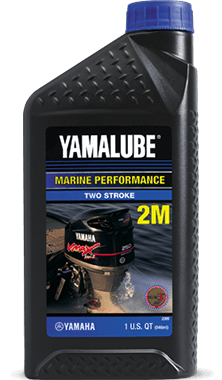GET THE BEST PROTECTION
When it comes to longevity, performance and protection, choosing the right oil and filter is the single most important thing you can do for your outboard. Let’s talk about the advantages of Yamalube oil and a Genuine Yamaha oil filter, and review when and how to change your oil.
CHOOSE YAMALUBE®
A full-synthetic blend great for high-performance outboards like V MAX SHO®. Protects from cold starts, hours of trolling, and high-load and high-speed operation.
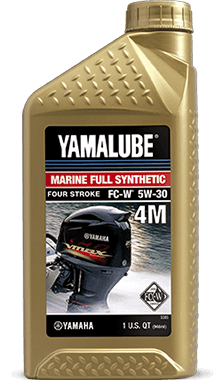

Shop Yamalube products at your nearest authorized Yamaha Marine dealer.
Find your dealer.
Engine load. The typical loads placed on your outboard are much heavier than on your car. This means your outboard is working much harder than your car’s engine. Yamalube 4M and 2M marine engine oils contain specific anti-wear additives to account for this.
Engine speed. Your outboard operates at a much higher RPM than your car’s engine. It must rev higher to create higher speeds, rather than just changing gears like your car. That’s tough on your oil, and can literally shear (or split) the molecules in ordinary automotive oil. Yamalube 4M and 2M have special shear-stable polymers to combat this and provide constant lubrication.
Engine speed. Your outboard operates at a much higher RPM than your car’s engine. It must rev higher to create higher speeds, rather than just changing gears like your car. That’s tough on your oil, and can literally shear (or split) the molecules in ordinary automotive oil. Yamalube 4M and 2M have special shear-stable polymers to combat this and provide constant lubrication.
Operating temperature. Outboards are cooled using raw water, which is often cool to very cold. On the other hand, saltwater will begin to crystallize if its temperature is raised above 170° F, potentially causing blockage in the cooling passages and leading to engine overheat and possible damage. Because of these two factors, your outboard operates full-time at a temperature much different than your car and requires very different qualities in its lubricating oil.
Operating environment. Your outboard is constantly ingesting humid air directly off the water’s surface in order to operate. This air also gets inside combustion chambers through open valves when it’s not in use. And in a saltwater environment, that air is even more corrosive. Yamalube 4M and 2M are formulated with special anti-corrosion agents to help combat and prevent the corrosive effects of this environment.
Operating environment. Your outboard is constantly ingesting humid air directly off the water’s surface in order to operate. This air also gets inside combustion chambers through open valves when it’s not in use. And in a saltwater environment, that air is even more corrosive. Yamalube 4M and 2M are formulated with special anti-corrosion agents to help combat and prevent the corrosive effects of this environment.
From heavier loads to corrosive environments—outboards take much more punishment than your typical car engine. This means outboards require special protection. Yamalube oil is certified to deliver it.
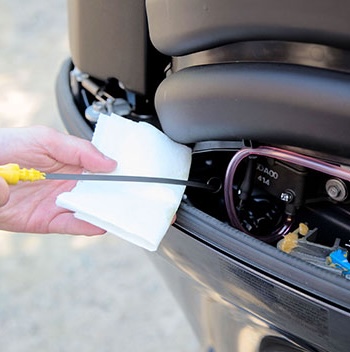

An outboard’s operating conditions are so different, that special levels of certification exist for marine engine oils: FC-W® (four stroke) and TC-W3® (two stroke). These represent the minimum standards of the National Marine Manufacturer’s Association® (NMMA®) for marine engines.
Yamalube 4M and 2M outboard engine oils meet or surpass these requirements. Featuring a proprietary blend of marine-specific anti-wear additives, shear-stable polymers, corrosion inhibitors, detergents, dispersants, and viscosity index improvers, they’re superior to automotive oils in their protection, durability, and corrosion resistance. Whatever oil you choose for your outboard, make sure it is the correct type and viscosity and that it carries either the NMMA® FC-W® or TC-W3® label.
Yamalube 4M and 2M outboard engine oils meet or surpass these requirements. Featuring a proprietary blend of marine-specific anti-wear additives, shear-stable polymers, corrosion inhibitors, detergents, dispersants, and viscosity index improvers, they’re superior to automotive oils in their protection, durability, and corrosion resistance. Whatever oil you choose for your outboard, make sure it is the correct type and viscosity and that it carries either the NMMA® FC-W® or TC-W3® label.
Do It Yourself
- Confirm the outboard is level, both side to side and front to back.
- With the outboard in the water, or using the proper flush attachment, start and warm the outboard until it reaches normal operating temperature (5 - 10 minutes), then shut off.
- Allow the outboard to sit for 5 minutes.
- Remove the Top Cowling to access the Oil Level Dipstick.
- Fully remove the dipstick and wipe it clean, waiting a moment to allow the dipstick tube to properly vent before reinserting the dipstick.
- Insert and fully seat the dipstick into the dipstick tube.
- Fully remove the dipstick and confirm the oil level is within the Upper and Lower range indicators on the dipstick.
- If required, adjust the oil level by adding or removing engine oil.
- Repeat steps 5 - 8 until the proper oil level is obtained.
NOTE: Over-Filling or Under-Filling the engine with oil can cause severe internal damage.
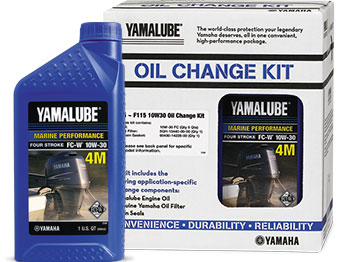

Nothings as easy as having your Yamaha Marine dealer and their trained service technicians change the oil for you. They’ll make sure the job’s done right and dispose of the oil, so you can get back to the fun, faster.
Whether you DIY or rely on your dealer for maintenance, you can track it all in our Siren Connected Boat™ app.
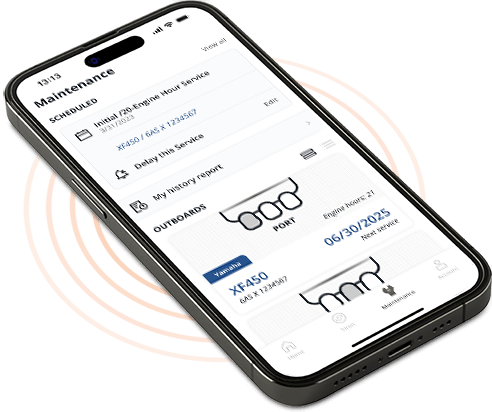
WHEN WAS YOUR LAST OIL CHANGE?
Know instantly with the Siren Connected Boat<sup>™</sup> App Are you due for your 20-hour new-outboard or 100-hour annual oil change? Stay on top of your service with the Siren Connected Boat app. It tracks DIY and dealer-completed maintenance right on your smartphone.
Are you due for your 20-hour new-outboard or 100-hour annual oil change? Stay on top of your service with the Siren Connected Boat app. It tracks DIY and dealer-completed maintenance right on your smartphone.



